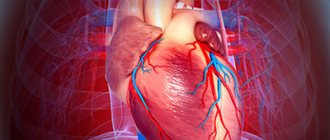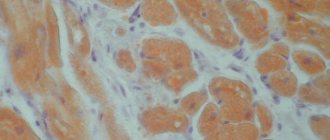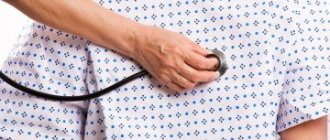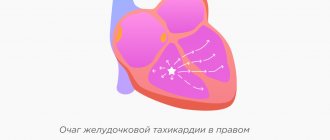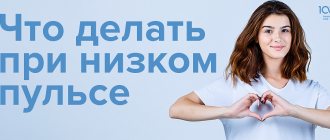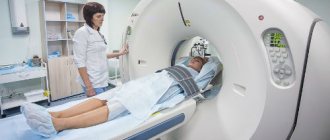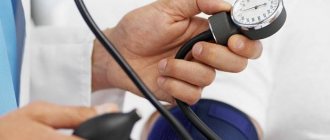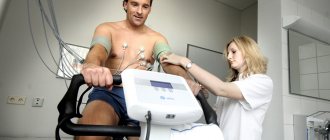Cardiac arrest is a complete cessation of ventricular contractions or severe loss of pumping function. At the same time, electrical potentials disappear in myocardial cells, impulse pathways are blocked, and all types of metabolism are quickly disrupted. The affected heart is unable to push blood into the vessels. Stopping blood circulation poses a threat to human life.
According to WHO statistical studies, 200 thousand people in the world have cardiac arrest in a week. Of these, about 90% die at home or at work before receiving medical attention. This indicates a lack of public awareness of the importance of emergency response training.
The total number of deaths from sudden cardiac arrest is greater than from cancer, fires, road accidents, and AIDS. The problem concerns not only older people, but also people of working age and children. Some of these cases are preventable. Sudden cardiac arrest does not necessarily occur as a consequence of a serious illness. Such a defeat is possible against the background of complete health, in a dream.
General information
Sudden cardiac arrest is a non-violent, sudden death due to various causes, manifested by sudden loss of consciousness and cessation of circulation.
It is extremely important to distinguish between the concept of “sudden cardiac death” and the concept of “sudden death”. The main diagnostic criterion for the latter is the causative factor: sudden death develops as a result of non-cardiac causes (rupture of an aneurysm of large vessels, drowning , thromboembolism of the pulmonary artery or cerebral vessels, airway obstruction, electric shock, shock of various etiologies, embolism, drug overdose , exogenous poisoning, etc.), while sudden cardiac death (SCD) is caused by heart diseases that develop immediately or within an hour from the moment of acute changes due to cardiac dysfunction. However, information about heart disease may or may not be available.
Cardiac arrest means the cessation of its mechanical activity, leading to the cessation of blood circulation, which, in turn, leads to oxygen starvation of vital organs and, in the absence/ineffectiveness of urgent resuscitation measures, leads to death. Sudden cardiac death is a group concept that includes a wide range of pathologies that cause it (various nosological units from the groups of ischemic heart disease, myocarditis , cardiomyopathies , prolongation of the Q-t interval , malformations of the heart / blood vessels, Brugada syndrome , Wolff-Parkinson-White syndrome , etc.) .
That is, this is a concept that is characterized by a single mechanism of death, namely, ventricular disturbances in heart rhythm, leading to chaotic and scattered (asynchronous) contractions of individual muscle fibers of the heart, as a result of which the heart ceases to perform a pumping function - to supply blood to organs and tissues . The most common type of sudden cardiac death is sudden coronary death (ICD 10 code: I24.8 Other forms of acute coronary heart disease). That is, coronary death is an independent nosological form of IHD; accordingly, cases of sudden death in patients with IHD are formulated as “sudden coronary death”, and in other cases of sudden death of a cardiac nature - as “sudden cardiac death” (I46.1).
Despite a significant decrease in mortality from cardiovascular diseases in developed countries over the past 15-20 years, it continues to remain high and causes the death of about 15 million people annually. SCD accounts for about 15% of cases in the overall mortality structure in the world, and about 40% from diseases of the heart and circulatory system (38 cases/100,000 population).
In Russia, the share of cardiovascular diseases in overall mortality is 57%, which is 200-250 thousand people per year. At the same time, IHD accounts for 50.1%. In almost 15% of cases, the cause of cardiac arrest is cardiomyopathies , 5% of patients had inflammatory heart diseases, and only 2-3% of patients had genetic abnormalities.
About 40% of people die from VVS during working age. The incidence of SCD in people of working age (25-65 years) is 25.4 cases/100 thousand population. This figure is significantly higher among males (46.1 cases/100 thousand population per year), while for women it is 7.5/100 thousand population, i.e. the ratio of SCD cases in men/women is 6.1:1.0. In 80% of cases, SCD occurs at home, including cardiac arrest during sleep, and about 15% - in a public place/on the street.
The proportion of cardiac arrest during sleep is higher than during wakefulness. The sudden and unpredictable nature of cardiac arrest, and the high incidence of deaths, along with the extremely low level of effective and successfully performed resuscitation measures, make the problem of SCD in clinical cardiology an extremely complex and difficult to resolve problem not only in emergency medicine in Russia, but in all countries in general.
The complexity of resuscitation measures is due to the fact that only a short-term cardiac arrest (no more than 5-6 minutes) provides the opportunity to restore physiologically normal activity of the higher parts of the brain under hypoxic . How long does the brain live after the heart stops working? It is generally accepted that under conditions of oxygen starvation (clinical death), a disruption of the barrier function of brain cell membranes occurs, which consists of an increase in permeability to electrolytes and water.
Already in the first 1-2 minutes, mono-divalent ions (H+, Na+, Cl–) and high-molecular protein compounds enter the cells of the cortex and brain structures. A decrease in ATP and cessation of energy metabolism disrupts the processes of protein synthesis and their physicochemical properties, fat metabolism and electrolyte composition, which causes complex intracellular changes. The rapid movement of potassium and sodium ions leads to a sharp increase in osmotic pressure and the development of “osmotic shock” and swelling of the tissues of brain structures. That is, the brain dies (biological death) 5 minutes after blood circulation stops.
Given the relatively high prevalence of SCD in the general human population and the fact that cardiac arrest in the presence of medical personnel with a relatively high chance of successful resuscitation is rare, early identification of individuals at increased risk of developing cardiac arrest is of particular importance.
From the history
The term sudden death first appeared in 1917 in the Philippines, where the syndrome was called “bangungut”. Then, in 1959, Japanese doctors called it “smoke”; specialists from Laos, Vietnam and Singapore also wrote about a similar phenomenon.
But as an independent disease, sudden cardiac death syndrome began to stand out in the 80s of the 20th century, thanks to American researchers. During this time, the American Centers for Disease Control in Atlanta recorded an unusually high mortality rate (25 cases per 100,000 people) among young people of Southeast Asian descent. It was noted that their deaths mostly occurred at night, and all the dead were men aged 20 to 49 years. Moreover, most of them were outwardly absolutely healthy, did not suffer from excess weight and did not have bad habits (alcohol, smoking, drugs).
Having compared the data obtained with information from colleagues from the countries of the Far East and Southeast Asia, the researchers found that it is in these regions that cases of this pathology are very common, and more often among young people. At the same time, such a syndrome practically does not occur among African-Americans.
Pathogenesis
Cardiac arrest is based on shifts in the gas composition of the blood and acid-base balance towards oxidation, which leads to disruption of metabolic processes, inhibition of conductivity, changes in excitability in the heart muscle and, as a result, disruption of the contractile function of the myocardium. A wide range of pathologies, different causes and types of contributing factors form different mechanisms of cardiac arrest. The cessation of cardiac activity may be based on different types of cardiac arrest, the main of which are: cardiac asystole and ventricular fibrillation .
What is cardiac asystole? Asystole means the complete cessation of contractions of the muscles of the atria and ventricles in the genesis of which is the complete cessation of the process of transfer of excitation from the sinus node in the absence of impulses in secondary foci of automaticity. This includes:
- asystole of the entire heart with impaired/complete blockade of conduction between the sinus node and the atria;
- ventricular asystole in the presence of complete transverse block;
- pronounced ventricular bradycardia against the background of incomplete blockade of conduction between the ventricles and atria.
Asystole can occur reflexively (suddenly) with still preserved myocardial tone or gradually (with preserved myocardial tone or with its atony). Cardiac arrest most often occurs in diastole and is much less common in systole. In Fig. The ECG below shows an agonal rhythm turning into asystole .
Ventricular fibrillation is understood as an asynchronous (chaotic and scattered) contraction of the muscle fibers of the heart, leading to disruption of the function of blood supply to organs and tissues. In this case, vigorous fibrillary contractions are observed (with normal myocardial tone) or sluggish (with its atony).
The main mechanism of cessation of blood circulation in most cases (85%) is ventricular fibrillation, the development of which is facilitated by factors that reduce the electrical stability of the myocardium: decreased cardiac output, increased heart size ( aneurysm , hypertrophy , dilatation ), increased sympathetic activity.
The cause of ventricular fibrillation is disturbances in the conduction of excitation in the conduction system of the ventricles. The preliminary stages of cardiac fibrillation are:
- ventricular fibrillation and flutter;
- paroxysmal tachycardia , which is caused by impaired intraventricular/intraatrial conduction.
In Fig. Below is an ECG for large-wave and small-wave ventricular fibrillation.
There are several theories to explain the mechanisms of heart rhythm disturbances during fibrillation, the most significant of which are:
- The theory of heterotopic automatism, which is based on the appearance of numerous foci of automatism that arise as a result of “overexcitation” of the heart.
- The theory of "ring" rhythm. According to its provisions, excitation continuously circulates throughout the myocardium, which leads to contraction of individual fibers instead of simultaneous contraction of the entire muscle.
An important mechanism for the occurrence of ventricular fibrillation is the acceleration of the excitation wave. In this case, only muscle fibers contract, which by that time had left the refractory phase, which causes chaotic contraction of the myocardium.
Also, disturbances in electrolyte balance (potassium and calcium) are of great importance in the development of pathology. Under conditions of a hypoxic state, intracellular hypokalemia , which in itself increases the excitability of the heart muscle, which is fraught with the development of paroxysms of disruption of sinus rhythm. Also, against the background of intracellular hypokalemia, myocardial tone decreases. However, cardiac activity is disrupted not only with the development of intracellular hypokalemia, but also with a change in the ratio/concentration of K+ and Ca++ cations. Such disorders lead to changes in the cell-extracellular gradient with a disorder in the processes of excitation/contraction of the myocardium. In addition, a rapid increase in plasma potassium concentration against the background of its reduced level in cells can cause fibrillation. Intracellular hypocalcemia can also contribute to the loss of the myocardium's ability to fully contract.
In general, regardless of the genesis of SCD, cardiac arrest must be based on a factor leading to the occurrence of SCD and disability of the heart muscle. The BCC formula can be presented as: BCC = substrate + trigger factor.
Where the substrate refers to anatomical/electrical abnormalities caused by heart disease, and the trigger factor refers to metabolic, mechanical and ischemic influences.
Diagnostics
Even if cardiac arrest is a rare episode, it is a reason to consult a cardiologist. Percussion can determine the expansion of the borders of the heart. During auscultation, muffled heart sounds and the presence of functional or organic noises are heard. To find out the cause of the symptoms, the doctor needs to obtain data from instrumental and laboratory research methods. Typically used:
- ECG.
During blockades, the ECG reveals a prolongation of the PQ interval and periodic loss of the QRS complex. Extrasystole is manifested by an extraordinary ventricular complex, after which a complete or incomplete compensatory pause occurs. Additionally, 24-hour Holter monitoring is prescribed. - EchoCG.
Ultrasound examination is necessary to find organic cardiac pathology that could cause freezing. Sonography can detect thickening of the heart wall, anatomical abnormalities, and a decrease in ejection fraction. Dopplerography is indicated to assess blood flow in the great vessels. - Biochemical tests.
Given the high prevalence of coronary artery disease, it is necessary to examine the blood lipid profile. The content of cholesterol and atherogenic LDL often increases. To exclude rheumatism and myocarditis, acute-phase blood parameters are determined - CRP, sialic acids. - Myocardial markers.
If cardiac arrest is accompanied by a serious condition of the patient and a sharp increase in symptoms, it is necessary to exclude a heart attack. For this purpose, the blood is examined for the level of troponin, myoglobin, AST and CPK enzymes. A slight increase indicates unstable angina, higher concentrations indicate myocardial necrosis. - Additional research.
If organic pathology is suspected, an MRI of the heart is performed. To identify signs of left ventricular heart failure, chest radiography is used. When cardiac arrest progresses to acute coronary syndrome, coronary angiography is performed.
Classification
Cardiac arrest is distinguished by:
- cause of heart disease (sudden cardiac death), among which, depending on the time interval between the onset of a heart attack and the onset of death, instantaneous (almost instantly) and rapid cardiac death (within 1 hour) are distinguished.
- non-cardiac causes (rupture of an aneurysm of large vessels, drowning, thromboembolism of the pulmonary artery or cerebral vessels, airway obstruction, electric shock , shock of various etiologies, embolism, drug overdose, exogenous poisoning, etc.).
What can emergency doctors do?
At the ambulance stage, first aid is provided in case of cardiac arrest.
Ventilation of the lungs is carried out through a mask using an Ambu bag. To achieve full contact with the trachea and press the tongue, intubation is performed or a special tube is inserted, connecting it to the bag. Compression achieves the supply of air mass into the lung tissue.
If special equipment is available, the heart is defibrillated with an electric current.
The effect of the discharge can be enhanced by the administration of Adrenaline and Atropine. These are drugs that sharply increase myocardial excitability. After their introduction intracardially, a second attempt at defibrillation is made.
In the absence of a defibrillator, indirect massage continues.
In a car with an ECG device, it is possible to take an electrocardiogram, at least a single lead. It can be used to judge the presence of asystole or fibrillation.
Causes of cardiac arrest
The main causes of cessation of cardiac activity in sudden cardiac death:
- Ventricular fibrillation (the proportion of cases of cardiac arrest is 75-80%);
- Ventricular asystole (in 10-25% of cases);
- Ventricular paroxysmal tachycardia (up to 5% of cases);
- Electromechanical dissociation (in 2-3% of cases) - the presence of electrical activity of the heart in the absence of mechanical activity.
The leading etiological factors for a high risk of sudden cardiac death are:
- Previous myocardial infarction .
- Cardiac ischemia.
- Non-ischemic cardiomyopathies (hypertrophic, dilated and arrhythmogenic right ventricular cardiomyopathy ).
- Diseases of the valvular apparatus of the heart (mitral, aortic stenosis , aortic valve insufficiency).
- Abnormalities of the thoracic aorta, dissection or rupture of aortic aneurysm.
- Long QT syndrome.
- Sick sinus syndrome.
- Arterial hypertension.
- Heart rhythm and conduction disorders.
Minor risk factors include:
- Hyperlipidemia / atherosclerosis (high cholesterol ).
- Extreme physical stress.
- Abuse of strong alcoholic drinks and drug use.
- Smoking.
- Severe electrolyte disturbances.
- Overweight/ obesity .
Extracardiac causes of cardiac arrest can be:
- Shock states of various origins.
- Obstructions in the respiratory tract.
- Emboli.
- Reflex cardiac arrest.
- Heart injuries.
- Electric shock. Overdose of drugs that cause cardiac arrest. First of all, you should not just look for which pills cause cardiac arrest, but understand that this is only possible in cases of overdose or self-administration of medications without a doctor’s prescription.
- Drugs that can cause cardiac arrest include: tricyclic antidepressants ( Amitriptyline , Tianeptine , Sertraline , Pyrazidol , Clomipramine , etc.), which can cause a slowdown in the conduction of excitation; antiarrhythmic drugs: Sotalol , Aprinidine , Disopyramide , Dofetilide , Encainide , Cordarone , Bepridil , Bretilium , Sematilid , etc.; drugs for the treatment of hypertension and angina - Nifedipine in high doses (above 60 mg per day), which increases the risk of ventricular fibrillation.
It should be noted that drugs that cause cardiac arrest can have a negative effect only if they are significantly overdosed or the conditions for their safe use are violated, for example, taken with alcohol or before/after taking alcohol-containing drinks or while taking narcotic substances.
Treatment
Help before diagnosis
When heart palpitations occur, a person needs to immediately sit down and take a comfortable position. In case of rare heart contractions, it is better to lie on your back with your legs slightly elevated. It is necessary to provide access to fresh air by opening windows or doors. Usually the state of health returns to normal within a few minutes. If the patient feels worse, complains of pain in the precardiac region or fainting, emergency medical attention is required.
Conservative therapy
Effective treatment can begin only after the causes of cardiac arrest have been established. Patients with severe illness receive intensive parenteral therapy in the hospital or intensive care unit, but in most cases outpatient treatment is sufficient. To eliminate the root cause of the symptom, normalize heart function and regulate the heart rate, the following is prescribed:
- Antiarrhythmic drugs.
In the arsenal of cardiologists there are 4 classes of drugs that are indicated for arrhythmias. They start with monotherapy, but if high doses of drugs are ineffective or intolerable, the optimal result is shown by a combination of 2-3 drugs. - Beta adrenergic agonists.
The drugs improve conductivity and increase heart rate in patients with atrioventricular block. Medicines are used in short courses. If therapy is ineffective, pacemaker installation is considered. - Anti-inflammatory drugs.
For myocarditis and rheumatic diseases, NSAIDs are recommended, which reduce inflammatory damage to the myocardium. In severe systemic processes, it is advisable to treat with glucocorticoids. - Metabolic agents.
Antihypoxants and antioxidants are widely used, which improve myocardial function in conditions of insufficient blood supply and prevent free radical oxidation. To increase the contractility of the heart muscle, ATP drugs are administered.
Symptoms of cardiac arrest
Let's look at the symptoms that can help identify cardiac arrest. The main signs of cardiac arrest are given below.
Loss of consciousness. Identified using sound effects (loud clapping, shouting) or patting the face.
Absence of pulse in large arteries. The best option for determining the pulse is the carotid artery. To do this, you need to place your fingertips in the middle part of the neck on the front surface of the trachea and, pressing the fingers against the skin, move them to the right side surface of the neck until they stop at the edge of the muscle. With a slight increase in pressure under the fingers, a pulsation should be felt in the carotid artery (Fig. below).
Lack of breathing. To determine the presence/absence of breathing, use visual, auditory and contact control:
- Place your hand on the victim's chest and determine the presence/absence of movement (excursion) of the chest.
- Apply your face (the cheek is especially sensitive) to the victim’s mouth/nose and look for air movement coming out of the airway or breathing sounds (picture below).
Dilated pupils that do not respond to light (the pupils do not constrict). To do this, you should lift the upper eyelid with your finger and look at the pupil: if the pupils remain wide when exposed to light and do not narrow, a conclusion is made that the pupil does not react to light. At night, you can use a flashlight for this purpose. (picture below).
Pale grey/bluish complexion. That is, the natural pinkish color of the facial skin changes to gray, which indicates a lack of blood circulation.
Complete relaxation of all muscles, which may be accompanied by involuntary release of feces/urination.
How to give first aid
Every adult should be able to provide emergency first aid. It must be remembered that you only have 7 minutes for all actions. This is a critical period for restoring cerebral circulation. If the victim can be saved later, he faces complete disability.
Those around us are faced with a difficult task:
- provide, using indirect cardiac massage, an imitation of contractions to temporarily support the blood flow system;
- restore spontaneous breathing.
The sequence of actions depends on the number of people taking part in providing assistance. Two will do it faster. In addition, someone should call an ambulance and note the time.
- First you need to make sure that nothing in your mouth can interfere with breathing, clean the oral cavity with your finger, straighten your tongue;
- put the victim on a hard surface (ground, floor), tilt his head back;
- hit the sternum with a fist (a precordial blow can immediately “start” the heart);
- Heart massage is done by jerky pressure on the sternum, keeping your arms straight and resting them on the patient’s chest;
- At the same time, artificial respiration is carried out in the classical way “mouth to mouth” or “mouth to nose”; when breathing into the mouth, you need to pinch your nose with your fingers; it is important to hold the victim’s lower jaw with your hand, pushing it slightly forward (to prevent the tongue from retracting).
The massage continues until cardiac activity is restored and facial skin color returns to normal.
It is recommended to take passive “breaths” after every four compressions on the sternum. For hygienic purposes, a thin scarf or gauze can be applied to the victim’s face.
If the chest begins to rise on its own, it means that your own breathing has appeared. But if the pulse begins to be felt, and there are no respiratory movements, only artificial respiration should be continued.
The critical period for resuscitation is considered to be 20 minutes. After this, the biological stage of death is stated.
The arriving ambulance team will continue resuscitation measures.
Prevention
General nonspecific measures to prevent cardiac arrest include:
- Timely diagnosis and treatment of diseases of the cardiovascular system.
- Control blood pressure and cholesterol levels.
- Quitting alcohol abuse and smoking.
- Moderate physical activity.
- Rational and balanced nutrition.
- Monitoring the correct intake of medications.
- Elimination of hypothermia, extensive injuries with large blood loss.
Consequences and complications
Against the background of cardiac arrest, even in cases of effective emergency therapy, in the medium term the development of ischemic damage to the brain, kidneys, liver and other organs is possible. There is a high risk of developing complications due to improper technique of cardiopulmonary resuscitation in the form of rib fractures at their connection to the sternum/midclavicular line. In this case, pinpoint hemorrhages may occur, merging into foci on the anterior/posterior surface of the heart in places where the heart is compressed by the sternum and spine.
All probiotics are the same
Probiotics are live microorganisms that are very beneficial to the body if taken in reasonable quantities. By probiotics, many people mean bacteria, but this effect can be exerted not only by bacteria, but by different microorganisms.
Probiotics are available in different forms - fermented foods, dietary supplements, pharmaceutical preparations. Some supplements contain one strain of bacteria, others contain several. Moreover, each drug has its own functions and mechanism of action. It is important not to confuse probiotics with prebiotics.
List of sources
- Yakushin S.S., Boytsov S.A., Furmenko G.I. and others. Sudden cardiac death in patients with coronary heart disease according to the results of the Russian multicenter epidemiological study of morbidity, mortality, quality of diagnosis and treatment of acute forms of coronary artery disease. Russian Journal of Cardiology 2011; 2 (88): 59-64.
- Bockeria O. L., Akhobekov A. A. Sudden cardiac death: mechanisms of occurrence and risk stratification. Annals of Arrhythmology 2012; 9(3): 5-13).
- Grishina AA Sudden coronary death at the prehospital stage. /AA Grishina, Ya.L. Gabinsky //Materials of the 9th All-Russian Scientific and Educational Forum Cardiology-2007. Moscow, 2007. - pp. 23-31.
- Bockeria L.A., Revishvili A.Sh., Neminushchiy N.M. Sudden cardiac death. – M.: GEOTAR-media, 2011. – 272 p.
- Revishvili A.Sh., Neminushchiy N.M., Batalov R.E. et al. All-Russian clinical recommendations for controlling the risk of sudden cardiac arrest and sudden cardiac death, prevention and first aid. 2021. Geotar-Med 256 p.
